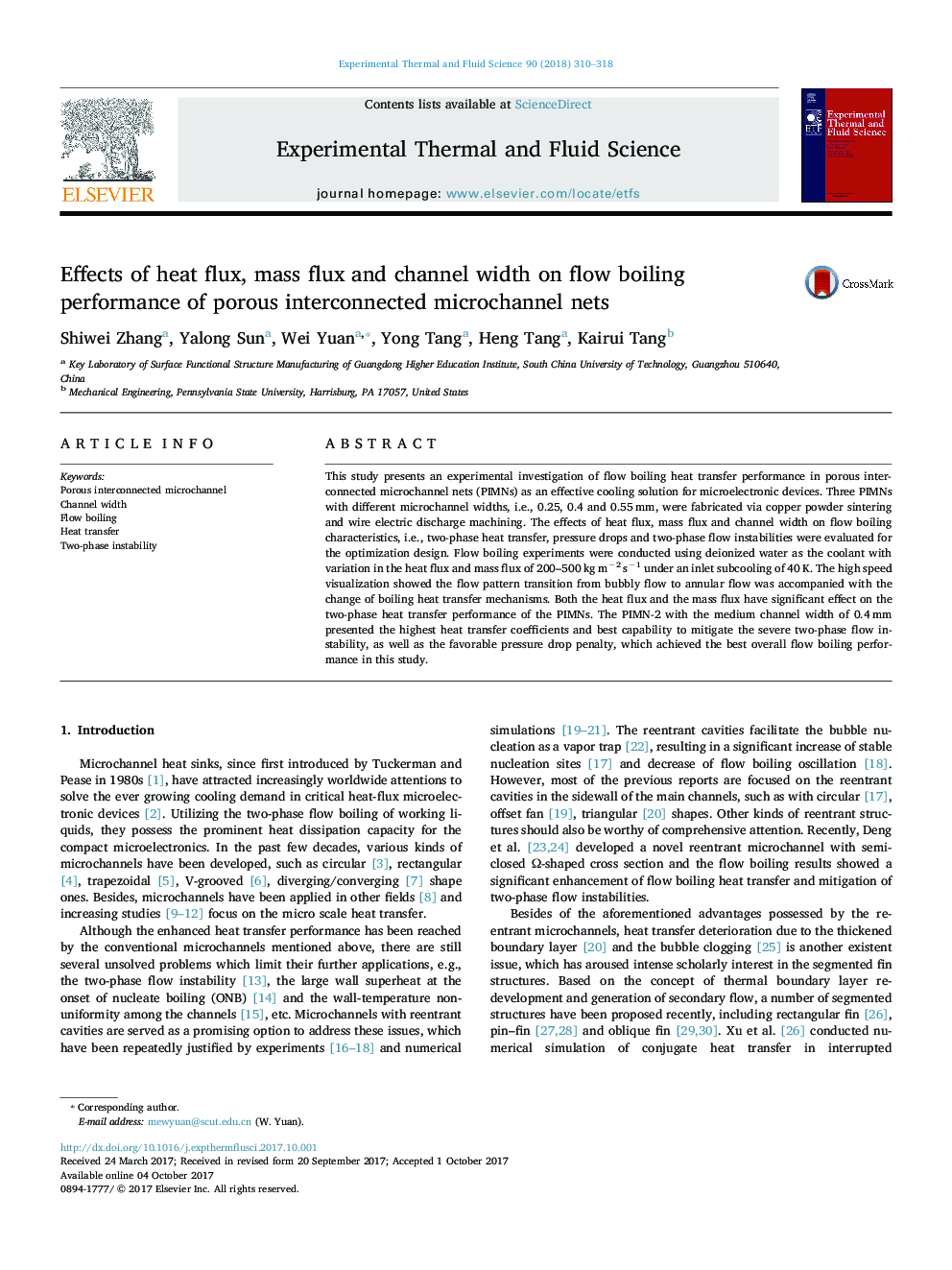| Article ID | Journal | Published Year | Pages | File Type |
|---|---|---|---|---|
| 4992444 | Experimental Thermal and Fluid Science | 2018 | 9 Pages |
Abstract
This study presents an experimental investigation of flow boiling heat transfer performance in porous interconnected microchannel nets (PIMNs) as an effective cooling solution for microelectronic devices. Three PIMNs with different microchannel widths, i.e., 0.25, 0.4 and 0.55â¯mm, were fabricated via copper powder sintering and wire electric discharge machining. The effects of heat flux, mass flux and channel width on flow boiling characteristics, i.e., two-phase heat transfer, pressure drops and two-phase flow instabilities were evaluated for the optimization design. Flow boiling experiments were conducted using deionized water as the coolant with variation in the heat flux and mass flux of 200-500â¯kgâ¯mâ2â¯sâ1 under an inlet subcooling of 40â¯K. The high speed visualization showed the flow pattern transition from bubbly flow to annular flow was accompanied with the change of boiling heat transfer mechanisms. Both the heat flux and the mass flux have significant effect on the two-phase heat transfer performance of the PIMNs. The PIMN-2 with the medium channel width of 0.4â¯mm presented the highest heat transfer coefficients and best capability to mitigate the severe two-phase flow instability, as well as the favorable pressure drop penalty, which achieved the best overall flow boiling performance in this study.
Related Topics
Physical Sciences and Engineering
Chemical Engineering
Fluid Flow and Transfer Processes
Authors
Shiwei Zhang, Yalong Sun, Wei Yuan, Yong Tang, Heng Tang, Kairui Tang,
